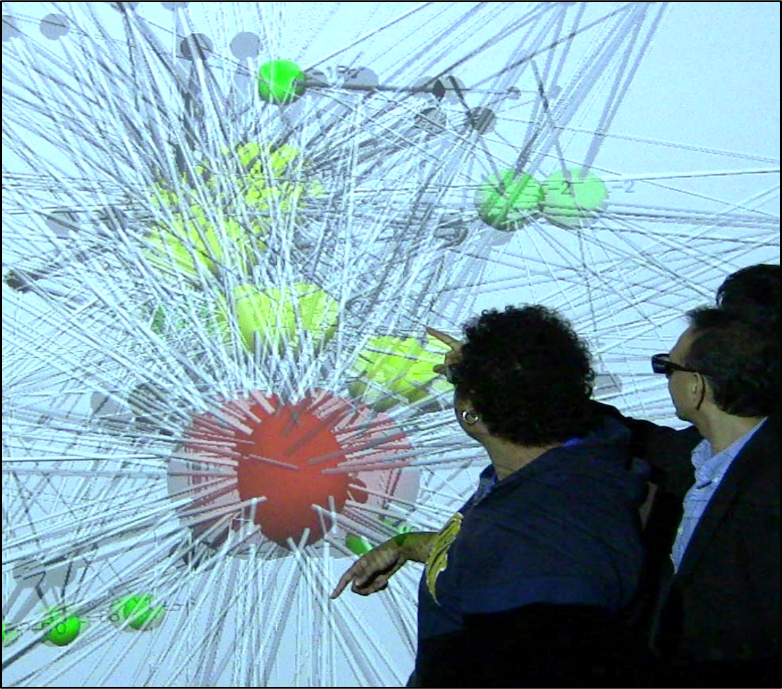

|
|
|
 |
Why Team-Centered Informatics? Potential. Many organizations are collecting molecular, clinical, environmental, and social information from millions of patients with the goal of accelerating medical breakthroughs. Read more.
Hurdle. Most informatics tools are designed for individual researchers to analyze just a few of these data types, making their integration and interpretation difficult. |
 |
What is it? Team-Centered Informatic approaches are designed to help multidisciplinary science teams get an integrated understanding of human biology and disease from large and diverse datasets, with the goal of improving health. (Bhavnani et al., 2019)
|
 |
What are its Main Design Features? Representations of data that are meaningful across disciplinary boundaries.
Analytics that enable the study and comprehension of associations among diverse types of variables in large datasets.
Interaction with large datasets that help team members collaboratively explore complex patterns.
Dissemination approaches that make the research transparent and translatable to researchers, physicians, patients, and the community. |
 |
What are its Benefits? Egalitarian Team Structure. Encourages team members to contribute their disciplinary knowledge in analyzing and interpreting a shared data representation, leading to a more egalitarian team structure.
Improved Collective Intelligence. Collaborative interactions with an evolving data representation improves collective intelligence about the disease mechanisms.
Novel Insights. Integration of disciplinary knowledge enables novel insights that transcend disciplinary boundaries. |
 |
How Has it Been Used? Severe Asthma. Analysis of cytokines and clinical data led to insights for a precision-medicine approach to treat severe asthma.
Pre-term Births. Analysis of epigenetic and clinical data led to the identification of molecular pathways implicated in pre-term births.
Hip-Fracture Readmission. Analysis of comorbidities and demographic variables led to the identification of patient subgroups with high risk of readmission, and the design of targeted interventions. |
 |
What Tools Have Been Developed? Subject-Variable Networks. Uses an intuitive visual and quantitative method to help teams get an integrated understanding of subjects (e.g., diseased, healthy) and their variables (e.g., genes, comorbidities).
ExplodeLayout. Uses machine learning to visually separate clusters in large and dense networks, useful for teams to interpret complex patterns. |
 |
What are its Theoretical Foundations? While Team-Centered Informatics focuses on the design and analysis of shared representations that help teams to integrate diverse types of data, the approach draws on concepts from several disciplines:
Interactive Data Visualizations (Visual Analytics). Heuristic Search in Big Data (Machine Learning). Information Externalization (Cognitive Science). Boundary Objects (Science of Team Science). Groupware (Computer-Supported Collaborative Work). Bipartite Networks (Network Science). |
| For more information, please contact Suresh K. Bhavnani |
|
This site maintained by the Institute for Translational Sciences |